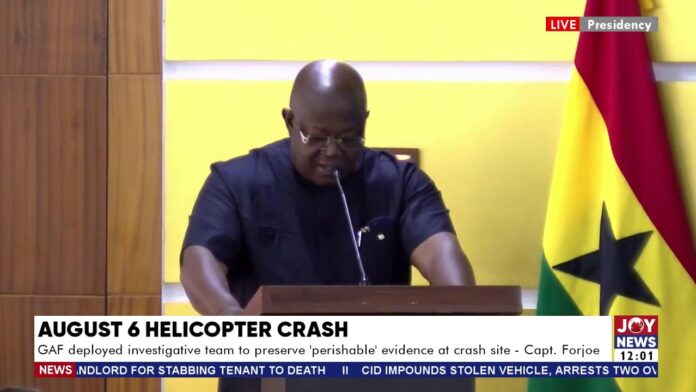The committee investigating the August 6 helicopter crash has ruled out reports of a mid-air explosion, confirming that the blast occurred only after
The committee investigating the August 6 helicopter crash has ruled out reports of a mid-air explosion, confirming that the blast occurred only after the aircraft hit the ground.
Presenting its findings in Accra on Tuesday, November 11, the committee’s chair, Captain (Rtd) Paul Forjoe, explained that the accident was caused by a sudden loss of altitude and lift due to a powerful downdraft.
He said although the helicopter lacked some modern safety systems, their absence did not contribute to the crash.
“If these additional safety enhancements had been available, the Air Force would certainly have welcomed them, as they enhance safety for our dignitaries. However, it would be inaccurate to claim that their absence caused the crash,” Captain Forjoe clarified.
He further stressed that there was no in-flight explosion.
“The Z-9 helicopter’s fuel tank is located beneath the passenger compartment. The aircraft was fully fuelled, so the explosion occurred only upon impact with the ground,” he explained.
The investigative committee, formed soon after the incident, was tasked with identifying the causes of the crash and recommending measures to prevent future occurrences. The inquiry covered technical, operational, and environmental aspects.
The accident involved a Harbin Z-9EH military helicopter (tail number GHF 631) operated by the Ghana Air Force. The aircraft departed Accra at about 9:12 a.m. for an anti-illegal mining mission in Obuasi, Ashanti Region, before losing radar contact and crashing in the Adansi Akrofuom District.
